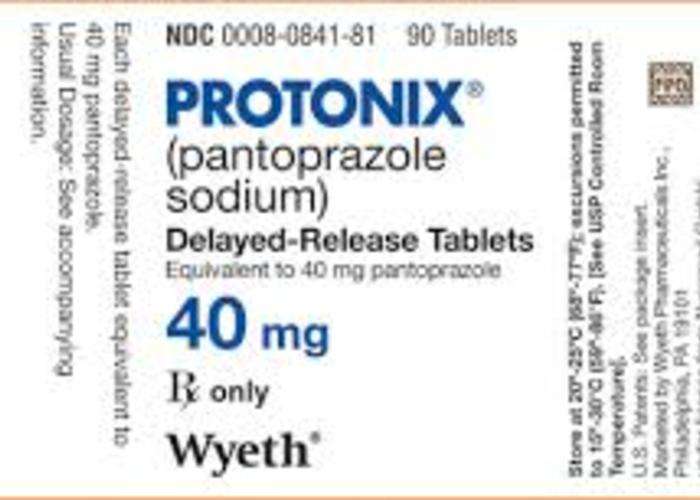Assisted Living Admission Requirements
To be eligible for residency in an assisted living facility, a person must first undergo an assessment to verify that they are in need of nursing home level care. The assessment must be completed by an RN. A person-centered service plan must also be created that is reviewed at least yearly, or whenever the residents service needs change. Medicaid recipients must participate in a long-term care consultation. Generally, a resident can need skilled nursing services for no more than 120 days a year.
The Cost Of Memory Care In Ohio
Because of the specialized staff training and resources required to provide high-quality memory care, memory care typically costs more than other types of residential care. On average, memory care will cost 20-30% more than assisted living.
In Ohio, the average cost of assisted living is $4,339 per month, which is almost $300 higher than the national average of $4,051 per month. As memory care costs an average of 25% more than assisted living, seniors can expect to pay around $5,424 for memory care in one of Ohios residential care facilities.
Across the state, memory care costs vary from city to city. In the capital city of Columbus, assisted living services cost an average of $3,945 per month. Some cities are quite affordable, such as the Cleveland area which costs an average of $3,575 per month, while others are above the state median, such as Cincinnati at $4,245 per month and Dayton at $4,455 per month. Costs can climb as high as $5,036 in Toledo. Its also important to note that these amounts are for standard assisted living services, and memory care may be anywhere from $860 to $1,300 more expensive per month, depending on the location of the facility and services offered.
PASSPORT Waiver
Assisted Living Waiver
Qualifying For Medicaid To Pay For Assisted Living
Long-term care Medicaid is a joint federal and state program that helps seniors with low income and limited assets get the care they need. Specific income and asset limits vary depending on factors like the kind of care required, a seniors medical diagnosis, where they live and their marital status. A doctor must also certify that a seniors need for care in an assisted living facility is medically necessary.
If a senior meets all financial and functional eligibility requirements, they must then find an assisted living facility that accepts Medicaid as payment. This final step can be difficult because there are typically few Medicaid-certified assisted living facilities due to low reimbursement rates. If a facility does accept this form of payment, they may only have a limited number of beds available for Medicaid patients. The best way to find a Medicaid facility is to contact the nearest Area Agency on Aging . Keep in mind that assisted living can be referred to by many different names, including adult foster care, board and care homes, residential care, group homes, personal care homes and memory care facilities. Understanding how your state refers to this type of care will make it much easier to navigate eligibility requirements, file an application and find a care facility.
Read Also: How To Get In Touch With Medicaid
Common Questions About Medicaid Benefits For Assisted Living
Paying for assisted living doesnt all have to be from your own pocket. One preferred way to pay is through Medicaid.
Medicaid is a state-administered public health insurance program that gives health care coverage to families or individuals with low incomes. It is the leading government-assistance program for long-term care and assisted living.
Here are 5 common questions people ask about Medicaid and helping to pay for assisted living.
Ohio Assisted Living Staffing Requirements

There are no minimum staffing requirements for residential care facilities in Ohio. It is up to the facility administrators to determine how many staff are needed to provide all scheduled and unscheduled care services for all the residents, 24 hours a day. Staff members below the age of 18 may not assist with medications, transportation or hygiene tasks like bathing.
You May Like: What Is Family Planning Medicaid Nc
What Are Disposable Assets
CMS in most states considers anything other than the recipient’s primary residence and certain cash limits to be subject to spend down, This includes IRAs, 401s, pension funds, bonds, vehicles, investment properties and second homes.
In the state of Ohio, a recipient’s primary home is not typically counted among disposable assets. If a recipient is placed into nursing care or is away from the residence for two or more years without the expectation of returning, however, the state may file a lien and begin liquidation procedures for the home.
Other Ways To Pay For Assisted Living
Not everyone can use Medicaid to pay for assisted living. Some might not qualify, and others might be too far down the waitlist to enroll or receive benefits when they need them. When that happens, families turn to other options, like private funding sources, insurance plans or veterans benefits.
Figuring out how to pay for assisted living services can be a complicated process, especially for low-income seniors. To find out more information about what your states Medicaid program covers and whether you qualify, visit Benefits.gov.
Care.com is the world’s largest online destination for care. We connect families with caregivers and caring companies to help you be there for the ones you love.
Care.com® HomePay is a service provided by Breedlove and Associates, LLC, a Care.com company.
Don’t Miss: Assisted Living Facilities In Arkansas That Accept Medicaid
What Assisted Living Services Does Medicaid Cover
Not all states offer financial assistance for assisted living, and those that do rarely cover the full costs associated with it. States pick and choose what services they will cover for enrollees. That said, there are a few common services that Medicaid will typically pay for, at least in part. These include:
-
Case management
-
Registered nurses or health aides
-
Transportation
While fees for room and board arent covered through Medicaid directly, some programs might cover the cost of food preparation and dining services, though not the food itself. In some states, like Ohio, Medicaid might also pay for recreational activities and housekeeping, as well as help families transition from rehabilitation facilities to assisted living facilities. Those who are eligible to receive Medicaid benefits might still need to pay a co-pay or some subset of the costs, even for services covered under the states program, says Tyler White, an elder law attorney at JacksonWhite Attorneys at Law in Mesa, Arizona.
As a rule of thumb, single Medicaid members are entitled to keep a personal needs allowance of about $115.00, White says.
The rest of their income goes toward covering their share of assisted living costs.
The Largest Providers In Ohio
There are some large national providers of assisted living services care that have facilities in Ohio. These include Sunrise Senior Living, with 12 communities Brookdale, with 11 communities Atria Senior Living, with two, and Holiday Retirement, with one. In addition, there are many smaller providers within the state.
Recommended Reading: New Mexico Medicaid Provider Portal
Directory Of Assisted Living Facilities In Ohio
It is very important to diligently research any facilities you may be considering for yourself or your aging loved ones. Youll want to know what size the facility is, details about the rooms it offers, amenities they provide like exercise groups and social events, rates, and more. Use our research tool below to compare multiple facilities near you.
Medicaid Waiver Assisted Living Columbus Ohio
Do you know if your parents assisted living community accepts the waiver? Not all communities do. To find communities that accept it, you can request a list from COAAA.
Whetstone Rehabilitation Center, Skilled Nursing & Assisted Living in Columbus, Ohio is one such community. We accept the waiver after two years of private pay. Located off Route 315 on Olentangy River Road across from Riverside Hospital, we serve Clintonville, Upper Arlington, Worthington and the greater Columbus area.
If you have any questions about the waiver or assisted living, feel free to contact us!
Jaclyn Spalding
Recommended Reading: Dentist In Meridian Ms That Accept Medicaid
What To Look For
There are more than 750 licensed Residential Care Facilities, also known as Assisted Living homes, in the state of Ohio. Use the Find Facilities tool to search for facilities. How do you determine which will meet your needs? The first steps involve reviewing the possibilities to narrow your selection.
What Is The Average Cost Of Memory Care In Ohio

In Ohio, the average cost of assisted living is $4,339 per month, which is almost $300 higher than the national average of $4,051 per month. As memory care costs an average of 25% more than assisted living, seniors can expect to pay around $5,424 for memory care in one of Ohios residential care facilities.
Also Check: Dentist In Greece Ny That Accept Medicaid
Understanding Different Medicaid Programs
Critical to understanding Medicaid, is understanding the difference between institutional Medicaid and Home and Community Based Services . Institutional Medicaid is provided in nursing homes. Home and Community Based Services, as implied by the name, are Medicaid services provided to individuals living at home or in the community. The phrase in the community includes adult foster care homes / adult family homes, adult day care, and assisted living residences, including assisted living specifically designed for persons with dementia called Memory Care or Alzheimers Care. HCBS are meant to prevent people living with dementia from premature nursing home admission due to the progression of the disease. As a side note, many states have their own names for their Medicaid program. For example, in California it is called Medi-Cal, in Massachusetts, MassHealth, and in Washington State, Apple Health.
Institutional Medicaid Institutional Medicaid, also called nursing home Medicaid, is an entitlement in all 50 U.S. states and the District of Columbia. This means, should the individual be eligible for Medicaid, the state must pay for their nursing home care.
Did You Know?
Can A Medicaid Exemption Be Used For Assisted Living
. This exemption is a Medicaid-sanctioned method that enables the adult child to be compensated for their caregiving in the form of a transfer of the parents home.
Medicaid for Ohioans Needing Assisted Living or Home Health Care Through Medicaid, Ohio will pay some of the costs of assisted living and home health care for those who qualify for Medicaid long-term care.
Almost all state Medicaid programs will cover at least some assisted living costs for eligible residents. Unlike with nursing home stays, there is no requirement that Medicaid pay for assisted living, and no state Medicaid program can pay directly for a Medicaid recipients room and board in an assisted living facility.
Read Also: Medicaid Doctors In Raleigh Nc
Assisted Living Waiver Program
Assisted living combines a home-like setting with personal support services to provide more intensive care than is available through home care services. Assisted living facilities provide older adults with an alternative to nursing facility care that is both less expensive and less restrictive.
Assisted living residences vary considerably, but most provide meals, housekeeping, laundry, transportation, and social activities. They also offer personal care, such as assistance with eating, bathing, grooming and personal hygiene. Some nursing care is also provided, including medication administration and dressing changes.
Costs for assisted living generally range from $2,000 to $4,000 per month and vary depending on the size of living area an older adult chooses, area of the state and the amount of care needed.
Ohio’s Assisted Living Waiver Program pays the costs of care in an assisted living facility for certain people with Medicaid, allowing the consumer to use his or her resources to cover “room and board” expenses. Individuals who meet certain service and care needs and meet established financial criteria may be eligible for Ohio’s Assisted Living Waiver Program.
To find out if assisted living is a good option for you, contact your Area Agency on Aging and request a free assessment. To determine if you may be eligible for Medicaid, visit Ohio Benefits.
So Where Does Medicaid Come In
For most people, Medicaid only becomes an option after Medicare benefits are exhausted. But what many people dont realize is that Medicaid benefits are not automatic. In fact, to receive Medicaid, a patient and the patient’s spouse must first “spend down” their “countable” assets. In most states that limit is down to $2,000 or $999.99 for a single patient, but gets more complex for married couples. In Ohio, the asset limit for a single person is $2,000. There also are categories of assets that will be automatically exempt for purposes of qualification.
Don’t Miss: Residential Treatment Centers That Accept Medicaid
How Are Ohio Nursing Home Reimbursement Rates Changing
The deadline for rebasing has actually passed July 1, the day DeWine signed it into law.
The process is currently underway, and the Ohio Department of Medicaid has until early August before bills for July rates are sent out.
Nobody has solid numbers yet on what the new reimbursement rates will be, nor how much the new rebasing process will fully cost. State legislators have put a cap on the total spending, earmarking $125 million a year well short of fully funding the rebasing, which could cost up to $250 million.
The last rebasing was fully funded, but priorities like tax cuts this time around took precedence. Lawmakers had also increased quality incentive payments for nursing facilities and reimbursements for at-home care.
“It’s a lot of money. It’s one of the bigger things that they make choices about during the operating budget,” said Susan Wallace, chief policy officer at LeadingAge Ohio, on rebasing. “I think that sticker shock, it just happens every time around because of the size of this spend.”
With the limited funding, an order of what rates gets updated was put in for the first time. Direct care costs get rebased first, then ancillary costs and lastly tax costs. But given the partial funding, lower priority costs may not even get new reimbursement rates at all.
In other words, it’s very likely for facilities to be paying 2021 taxes but still reimbursed at the 2014 rate.
Nursing facilities expressed disapproval with how lawmakers tackled that concern.
Ohio Home Care Waiver Program
If you are 59 or younger, meet the above financial requirements and require a nursing facility level of care, but can stay in your home if you get assistance, you may qualify for Ohio’s Home Care Waiver Program. You must show that you would have to move to a nursing facility if you did not receive the waiver services in your home. If you qualify, you can receive case management services, nursing services, personal care services, skilled therapy services, changes to your home to make it more accessible, assistive devices, emergency response systems, home-delivered meals, adult day health care, respite care, and transportation.
To find out more about the PASSPORT or Home Care Waiver programs, contact the Area Agency on Aging serving your community.
Ohio has other waiver programs for individuals with developmental disabilities. For more information about those, contact your county’s Board of Developmental Disabilities.
Don’t Miss: Does Sc Medicaid Cover Weight Loss Surgery
What If Your Husband Or Wife Has Been Diagnosed With Amyotrophic Lateral Sclerosis Or Parkinson’s Huntington’s Or Some Form Of Dementia Like Alzheimer’s
Along with the devastating news, the neurologist recommends that your spouse be placed in a nursing home today. You have no idea what this will cost, let alone how you will pay for it. In short order, you learn that Medicare will not pay, especially for the long-term. You become familiar with Medicaid but have no idea whether your spouse qualifies or even how to apply.
Before facing a situation like this, you need to discuss the Medicaid planning and application process with an experienced elder law attorney. An elder law attorney will have the necessary skills and contacts required to help you address the important issues, create a strategy, engage and direct the required healthcare staff, and work with you to get the Medicaid application approved by your state Medicaid agency.
How Do I Figure Out The Best Retirement Plan To Fit My Needs

The best course of action is to start planning early with help from a legal expert and/or certified financial planner who specializes in eldercare law and knows the ins and outs of your state’s Medicare and Medicaid regulations. Then be flexible enough in your planning to be able to adjust as circumstances require.
If you are already thinking about your retirement care options for the near future, now is the time to start making decisions and making your loved ones aware of your wishes.
Speak with a lawyer and draw up a living will, designate your medical powers of attorney and set an advance directive. With the proper planning, you can make your transition to assisted care as seamless as possible
Read Also: How Much Does Medicaid Cover For Childbirth
Assisted Living Medicaid Policy
While Ohio Medicaid doesnt directly cover the costs of assisted living, it does provide assisted living waivers for the elderly residents who qualify according to age and income requirements. This waiver helps pay for care received while in assisted living, allowing the participant to use their resources the room and board rate, which is $700 in 2018. There is a waitlist for the waiver, but there are plans to eliminate the waitlist in the next few years. Most facilities participate in the Medicaid waiver program those that dont must provide written notice to residents or their sponsor prior to admission.
